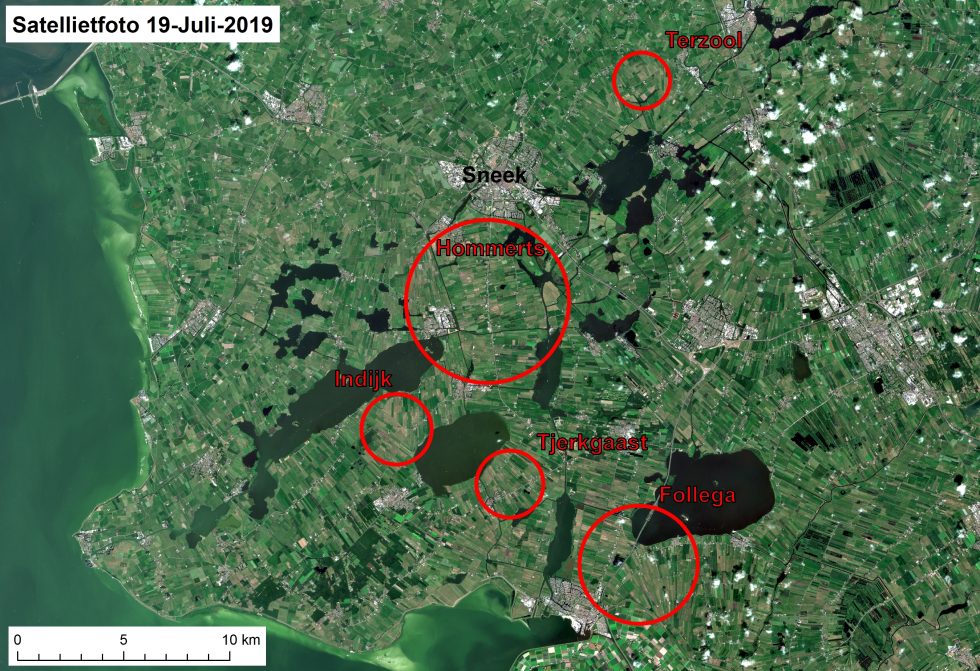-

The circled areas are where the first mouse damage was noted. [credit: Groenmonitor ]
It isn’t only rabbits that breed like rabbits. Mice, given the opportunity, will do the same. A warm winter, dryish spring, and early summer in Friesland in the Netherlands has provided exactly the right conditions for the small rodents to get their groove on. The mice are now a literal plague, reducing fields of grass and grain to brown, barren wastelands. The damage done by the mice is visible from space, as pointed out by the Groen Monitor, run by Wageningen University.
Mice have been a problem in the past, but Dutch farmers no longer wring their hands and weep for their fields. No, they are prepared. In the Netherlands, there is generally a lot of water in canals just lying around waiting to be used. And often the water level in the canals is higher than the local ground level, so when you take water out of the canal, you get a puddle. The farmers pump water out the canals to flood the fields, drowning the nest-bound pups. Flooding does not present a problem to adult mice though, which clamber out of their holes and strike out for solid ground—there may even be an olympic medal for strongest mouse swimmer.
A sudden influx of water is only the beginning of the mice’s problems however, because the ever-present seagulls are unforgiving and voracious. Between the water and the predators, not many mice survive. Yet, for some reason, not all fields can be (or are) flooded. This leaves a sharp contrast between the healthy green fields, where the mouse numbers are controlled, and the brown unhealthy-looking fields where the mice are eating themselves—and the farmers—out of house and home.
No comments:
Post a Comment